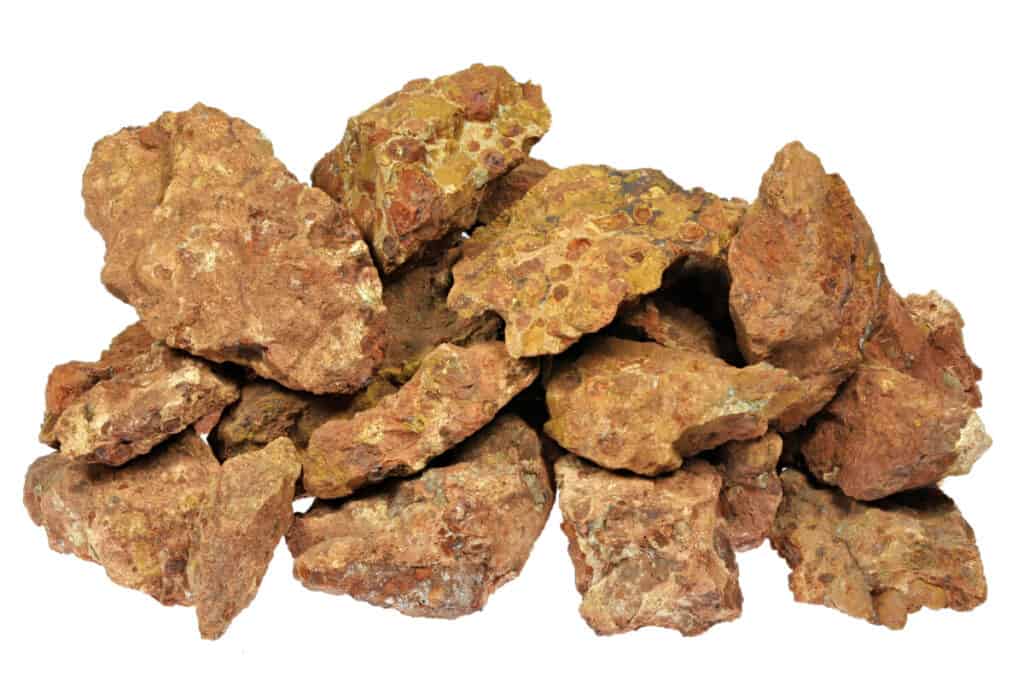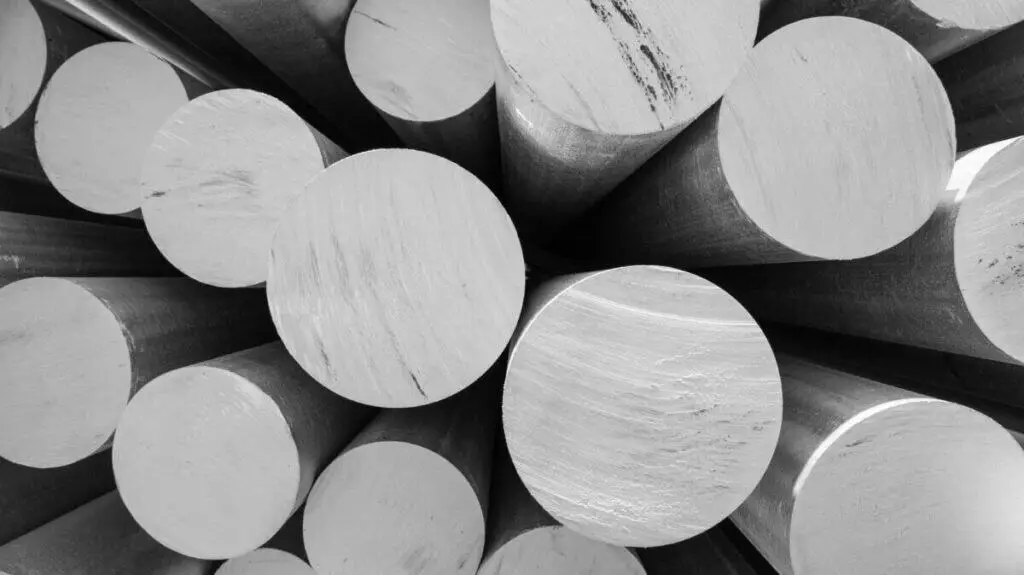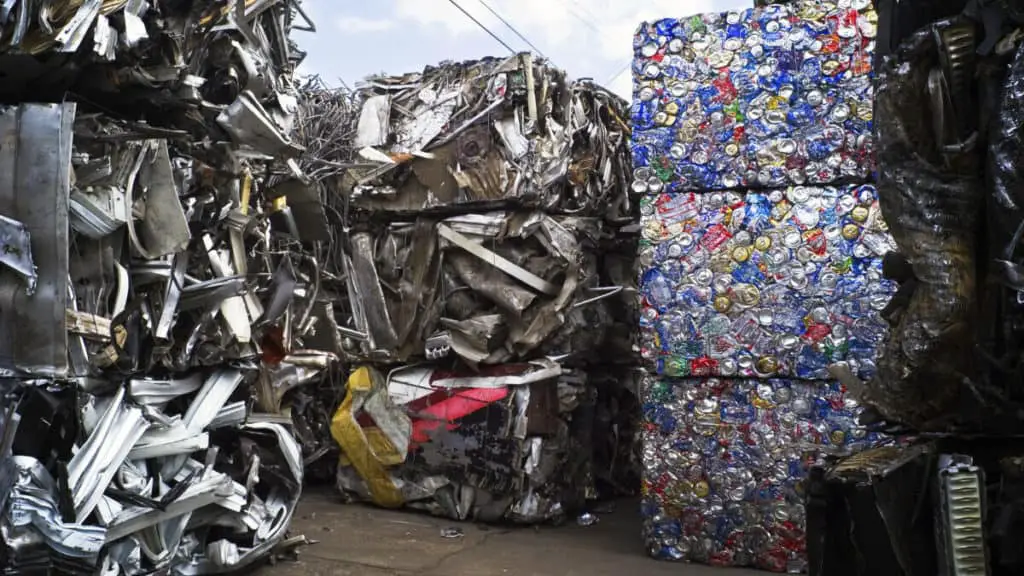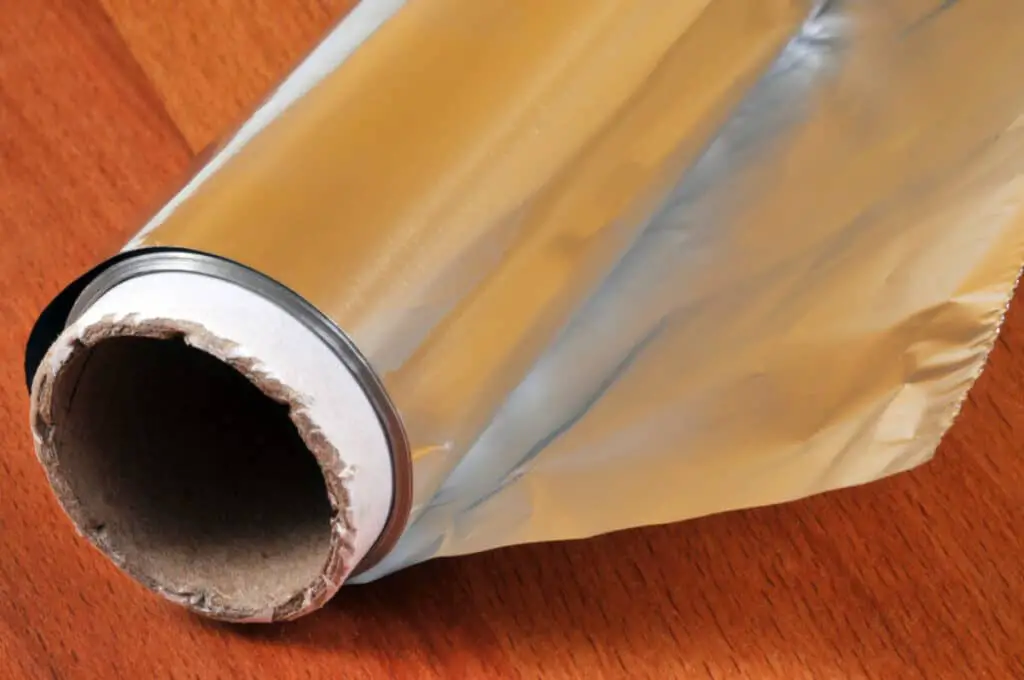
With the abundance of aluminum products today, it is not likely there will be a day when you don’t see aluminum. For soda cans to airplanes to house appliances, aluminum is all around us. It is also one of the most highly sought manufacturing materials in the world.
Recycling aluminum saves 90% of the energy it takes to forge new aluminum. Additionally, because aluminum is a sustainable metal, it can be recycled again and again without loss of product or quality. Not only do these benefit manufacturers, but it is also a boon to environmental preservation.
Just how big of a difference does recycling aluminum products have? Is recycling every aluminum product worth the effort?
What is Aluminum?
Though it does not appear in its pure form in nature, aluminum is the most abundant metal in the Earth’s crust. Aluminum is the second most malleable metal after gold and is the sixth most ductile. It is a low-density metal, is corrosion resistant, has high thermal conductivity, and is non-toxic, making it an excellent material for manufacturing. Products made from aluminum are light and durable.
At one point in history, aluminum was valued higher than gold! French Emperor Napoleon III was excited at the potential uses of aluminum in weapons manufacturing and funded works to obtain pure aluminum. Eventually, when aluminum production proved too slow for his liking, Emperor Napoleon III had the entire aluminum stock of France melted into silverware, which was reserved only for the monarch and his honored guests. Regular attendees to royal functions were given the lesser gold cutlery for use.
To obtain pure aluminum, alumina is extracted from bauxite ore— a sedimentary rock strip-mined in open-pit mines— and smelted into aluminum. Though bauxite is plentiful, it is costly to mine, in more than one sense. Bauxite mines are frequently located on indigenous-owned land, displacing people and fauna from ancestral homelands and destroying existing flora to access the minerals within the ground.
The mining of bauxite can also have a negative chemical effect on the surrounding environment. The leftovers once alumina has been extracted are called “red mud,” a toxic mixture of water and chemicals held in ponds around the mining site. Breach of these containment ponds can contaminate soil and water alike. Spills can cause damage to waterways and agricultural land, spreading mud with dangerously high concentrations of mercury, fluoride, barium, beryllium, copper, nickel, and selenium present.



What Is Aluminum Used For?
Aluminum is used in the manufacturing of many goods today, both decorative and functional. It is used as plating for household instruments, framing for airplane fuselages, cans, foil, piping, decorative paper, telescope mirrors, and so much more. Its combination of strength, good reflectance, ductility, and corrosion resistance make it a versatile and valuable material.
The malleability of aluminum allows for its use in a great many things. It can be hammered into very thin sheets or cast into heavier components. Because pure aluminum is not very strong, it is often used in alloys. Copper, manganese, magnesium, and silicon alloys are all strong and lightweight substances that are common in the construction of transportation vehicles, including cars and airplanes.
Ford’s most popular truck, the F150, is made out of aluminum, as are the Tesla models for the famed electrical car company. NASA used aluminum alloys in the construction of the Apollo aircraft for its strength and lightweight, both important when venturing beyond the Earth’s atmosphere. Due to its high conductivity aluminum is also an effective and cheaper option for electrical wiring than copper.
A more quotidian use of aluminum is in food and soda cans. First introduced in 1959, the aluminum can has only increased in popularity. There is currently a movement to replace single-use plastic bottles with aluminum cans to reduce amounts of plastic waste. As aluminum cans are far more frequently (and easily) recyclable, this would seem to be a much more sustainable option.

Is Aluminum Recyclable?
Yes! In fact, aluminum is so efficient to recycle, that it can continue to be recycled indefinitely with no loss of material. Not only that, but it is also a much cheaper and safer way to source aluminum than mining. Some states in the US also offer compensation in return for recycling aluminum, making the fiscal benefits twofold.
Not only is aluminum cheaper, easier, and more efficient to recycle than ever, but it also increases the benefit we reap from it. Around 75% of all aluminum ever produced is still in use today, in one form or another. To help grasp this concept a little better, let’s look at one product. The average aluminum beverage can is made with 73% recycled content. That means that around 3/4 of your Diet Coke can has already been a can before, or a machine part, or a number of other things. That is a long shelf-life!
Statistics within the U.S. have also shown that, as always, the promise of immediate monetary cost and reward also increases aluminum recycling. States that have “bottle bills,” or container deposit laws— which require consumers to pay a refundable price on any disposable aluminum beverages— recycle anywhere from 75% to 95% of all aluminum cans sold. States without bottle bills recycle only around 35% of their aluminum cans, on average.
With recycling, we can get infinite use from aluminum. Unlike other recyclables like paper and cardboard— which can be rendered permanently unfit for recycling when exposed to common corrupting elements like grease and chemicals— aluminum is harder to contaminate, making it even more efficient as a recyclable material. Because of this unlimited use, aluminum products are the most value out of any other, both in terms of use and energy efficiency.
Here’s the problem though: only around 35% of aluminum products are recycled each year. That equates to less than half of all aluminum cans sold in a year (worldwide), not to mention the plethora of other aluminum objects. Aluminum that ends up in a landfill is money thrown down the garbage disposal— a complete waste of perfectly usable (and valuable) material.
Let’s talk about money. One common complaint in regards to recycling is that doing so is inefficient for commercial success. However, aluminum is one of the few commercially successful forms of recycling out there. For the most part, businesses and individuals in the U.S. are eager to participate— but there is a lot of room for improvement. The current demand for aluminum greatly exceeds the supply of recycled aluminum. Indeed, though 71% of aluminum within commercial products is recycled, only around one-third of all aluminum production comes from recycled material.
Even if we were to recycle 100% of the aluminum present in the market, the high demand for aluminum production would necessitate continued bauxite mining, alumina extraction, and aluminum smelting. How can we encourage more frequent and responsible aluminum recycling, and how can that balance out the market’s high aluminum demand? According to the International Energy Agency (IEA) “Governments can stimulate action by better coordinating aluminum scrap collection and sorting, funding [Research, Design, and Development] RD&D and adopting mandatory CO2 emissions reduction policies.”
In addition to recycling more, the IEA and other experts suggest that the planet would benefit from more responsible planning as well as aluminum processing technologies. While we may not be able to eliminate bauxite mining, current methods of mining and toxicity control can certainly be improved upon. As more efficient techniques are developed, our market can continue to increase in benefit from aluminum recycling and production.

What are the Benefits of Recycling Aluminum?
An immediate benefit to recycling aluminum is the amount of money saved and pollution prevented. Where the mining of ore for the manufacture of new aluminum demands a high amount of energy and potential damage to the environment, recycling aluminum saves around 90% of the energy it takes to mine and produces new aluminum. Not only is it cost-effective, it also prevents further harm to the environment brought by the mining of bauxite.
Bauxite mining sites can be extremely damaging to their immediate environments, as well as the earth’s wellbeing as a whole. Forest clearing, most commonly by burning, is a practice used to clear access to new areas for bauxite mining. Adding the emissions of forest clearing to the regular emissions present in mining operations, bauxite mines release an estimated 1.4 megatons of carbon dioxide into the atmosphere yearly. For reference, that is about the same as what would be released by an average passenger car driving 3.2 billion miles.
Exactly how much energy is that 90%? Well, for reference, processing 1 lb of recycled aluminum saves around 7 kilowatt-hours of electricity. For those of you unfamiliar with units of power, that is a lot. The same energy that it takes to produce one new aluminum can from bauxite ore produce 20 cans from recycled aluminum. Just think of it: if we increased the amount of aluminum recycled each year, we could increase our productivity by tenfold! It takes around 17,000 kilowatt-hours to process 1 ton of new aluminum. That is around the same as powering a lightbulb for two and a half months.
According to the Environmental Defense Fund (EDF), if we collected the amount of aluminum thrown away by Americans every three months we would have enough scrap with which to rebuild the entire U.S. commercial airplane fleet from scratch. As of 2020, the U.S. commercial airplane fleet consisted of 5,791 planes. Imagine what could be done with that aluminum if recycled! Imagine what could be done with the energy and money saved from reducing the amount of money and energy spent on bauxite mining.
So is recycling aluminum worth it? Absolutely!

How to Recycle Aluminum?
So how exactly does one go about recycling aluminum? For some things, it’s easy! Most cities provide citizens with bins or containers for garbage and recycling which are picked up weekly and taken to a recycling plant where they are cleaned, sorted, and crushed. This works for most cans, bottles, and other various aluminum goods that get used in the average household. In areas where recycling isn’t collected by the city or where waste is not regularly gathered, people can still recycle by collecting their aluminum goods and bringing them to a local recycling facility.
In some states, like California, Iowa, Hawaii, Maine, and Oregon, you can turn in used aluminum cans for money. While some places will shell out as much as $2 for a pound of aluminum, the average price settles at around 59 cents per pound. Not only is it a good way to make a little extra cash, but it’s also a great way to help the environment!
What about things like broken appliances with aluminum parts? For larger or more abnormal aluminum goods, bring them to a scrap collector or recycling plant yourself. Places like these are familiar with dealing with more unusual products and are able to properly dispose of and reuse them.
Some aluminum items may be harder to recycle. Aluminum foil or pans used for cooking are often covered with grease or food splatter. Recycling plants are unable to accept aluminum with food waste on it because of the damage it can do to the batch it ends up compressed in. However, there are still a few ways you can make recycling work for you.
Firstly, you can take a few minutes to wash the aluminum foil yourself. While it may be harder to clean in a factory setting, the same is not an issue at home where you can make sure it’s free of damaging oils and such. You can also reuse it! Aluminum foil that has been folded can be useful for sharpening scissors, protecting ovens from splatters, cleaning grills and cast iron pots, or in the yard as a bird deterrent. Recycling aluminum doesn’t just have to happen in a processing plant, you can also save money and benefit from reusing things right at home.
Related Topics:
If you like the article above, here are some other similar articles you should check out!

